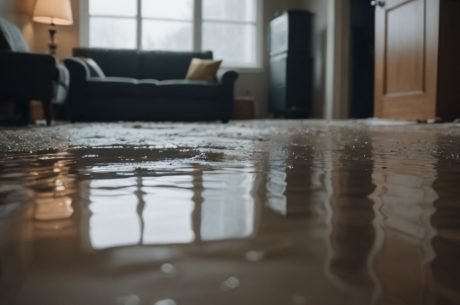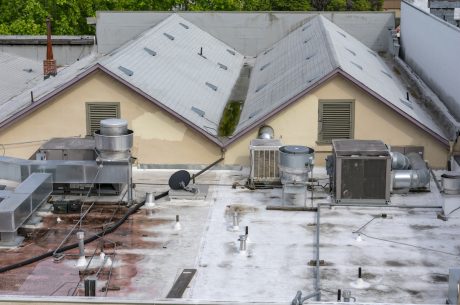Table of Contents
What to Do if Your Basement Floods After a Summer Downpour
Summer storms can bring heavy rainfall in a short amount of time, overwhelming drainage systems and leading to unexpected basement flooding. A flooded basement is not only stressful but can also cause significant damage to your property and pose health risks if not addressed quickly.
If you find yourself dealing with a flooded basement after a summer downpour, it’s important to act fast. Here’s a step-by-step guide on what to do to minimize damage, ensure safety, and prevent future flooding.
1. Ensure Safety First
Before entering a flooded basement, prioritize safety:
- Turn Off the Power – Water and electricity are a dangerous combination. If the water level is high enough to reach electrical outlets or appliances, shut off the power at the main breaker. If the breaker box is in the basement and you can’t safely reach it, call an electrician.
- Wear Protective Gear – Floodwater can be contaminated with sewage, chemicals, or bacteria. Wear rubber boots, gloves, and a mask to avoid direct contact.
- Check for Structural Damage – If the flooding was severe, inspect the foundation and walls for cracks or instability before entering.
2. Identify the Source of the Flooding
Understanding why your basement flooded will help prevent future incidents. Common causes include:
- Heavy Rainfall Overwhelming Drainage – If the ground is saturated, water may seep through cracks in the foundation.
- Sump Pump Failure – If your sump pump stops working during a storm, water can quickly accumulate.
- Clogged or Broken Gutters/Downspouts – If gutters are blocked, water spills over and pools near the foundation.
- Sewer Backup – Heavy rain can overload municipal sewer systems, causing wastewater to back up into basements.
Once you identify the issue, you can take steps to fix it.
3. Remove Standing Water
The faster you remove water, the less damage your basement will sustain. Here’s how:
- Use a Wet/Dry Vacuum – If the water level is low, a shop vac can help extract it efficiently.
- Use a Sump Pump – If you have one, ensure it’s working properly. If not, consider renting or buying one for future emergencies.
- Bail Water Manually – In extreme cases, buckets and mops may be necessary.
- Call a Water Damage Restoration Company – For severe flooding, professionals have industrial-grade pumps and drying equipment.
4. Dry Out the Basement
Even after removing standing water, moisture can linger, leading to mold and mildew growth.
- Use Fans and Dehumidifiers – Position fans to circulate air and run dehumidifiers to reduce humidity.
- Open Windows (If Weather Permits) – Ventilation helps speed up drying.
- Remove Wet Items – Carpets, furniture, and boxes should be taken outside to dry or discarded if unsalvageable.
5. Clean and Disinfect
Floodwater often contains harmful contaminants. Thorough cleaning is essential:
- Scrub Walls and Floors – Use a mixture of bleach and water (1 cup bleach per gallon of water) to disinfect surfaces.
- Dispose of Contaminated Items – Porous materials like carpets, drywall, and insulation may need replacement if soaked.
- Sanitize Belongings – Wash and disinfect any salvageable items.
6. Check for Mold Growth
Mold can develop within 24-48 hours after flooding. Look for musty odors, discoloration on walls, or fuzzy growth. If you suspect mold:
- Use Mold-Killing Solutions – Hydrogen peroxide or commercial mold removers can help.
- Wear Protective Gear – N95 masks and gloves are necessary when handling mold.
- Call a Professional for Severe Cases – Large infestations may require expert remediation.
7. Prevent Future Flooding
Once your basement is dry and clean, take proactive steps to avoid another flood:
- Install or Maintain a Sump Pump – Test it regularly and consider a battery backup in case of power outages.
- Improve Grading Around Your Home – Ensure the ground slopes away from the foundation to direct water flow.
- Clean Gutters and Extend Downspouts – Keep gutters debris-free and ensure downspouts direct water at least 5-10 feet from the house.
- Seal Foundation Cracks – Use hydraulic cement or waterproofing sealant to prevent seepage.
- Install a Backwater Valve – This prevents sewer backups during heavy rains.
8. Review Your Insurance Policy
Many homeowners assume flood damage is covered, but standard policies often exclude it.
- Check Coverage – See if your policy includes water damage from storms or sewer backups.
- Consider Flood Insurance – If you live in a flood-prone area, a separate flood insurance policy (like NFIP) may be necessary.
- Document Damage – Take photos and keep receipts for repairs to support insurance claims.

Final Thoughts
A flooded basement after a summer storm can be overwhelming, but quick action can save you time, money, and stress. By following these steps—prioritizing safety, removing water, drying the space, cleaning thoroughly, and taking preventive measures—you can mitigate damage and reduce the risk of future flooding.
If the situation is beyond your control, don’t hesitate to call professionals for water extraction, mold remediation, or structural repairs. Being prepared and knowing what to do can make all the difference when disaster strikes.
Don’t let a flooded basement disrupt your life. Contact PuroClean of Auburn today for reliable and efficient flooded basement cleanup services. We’re here to help you every step of the way!
Call PuroClean of Auburn now at 207 531 1200 for flooded basement cleanup service in Maine. Let us take the stress out of water damage restoration so you can focus on what matters most—your family and your home.



